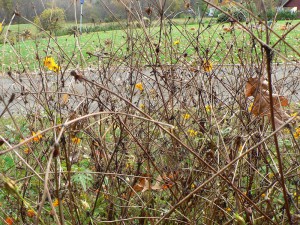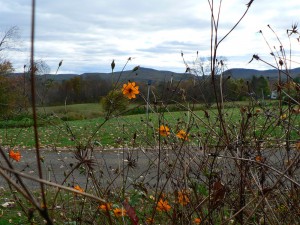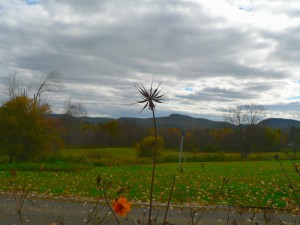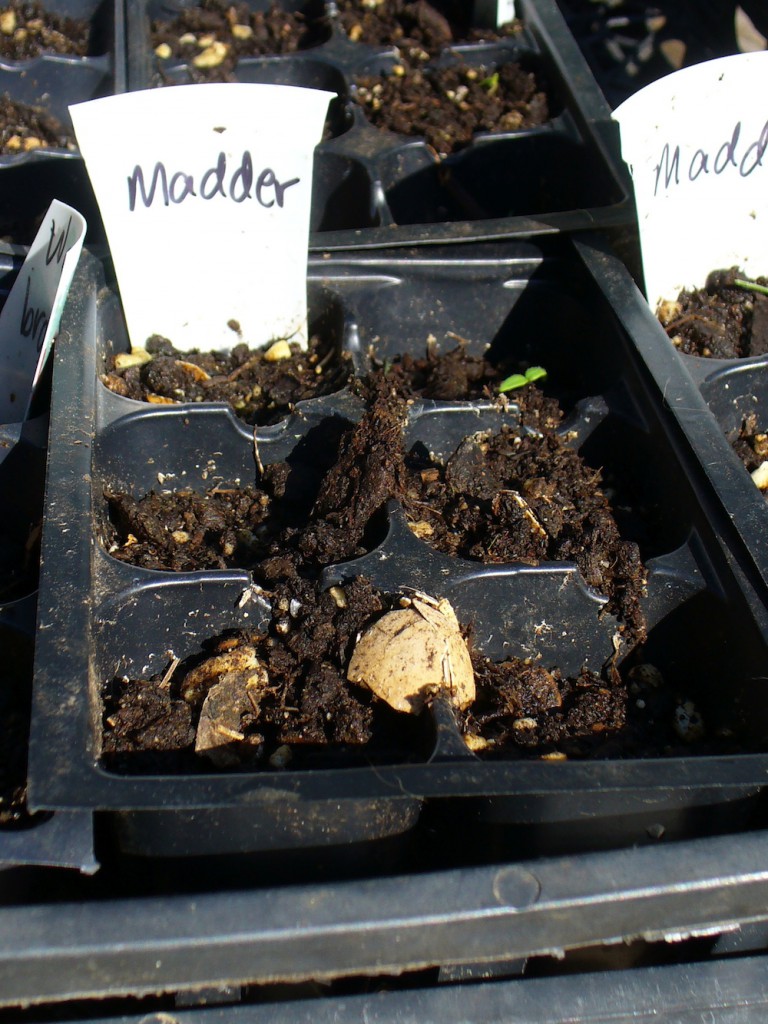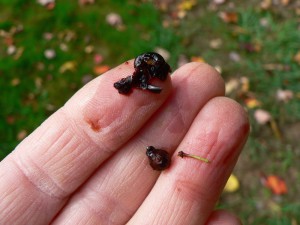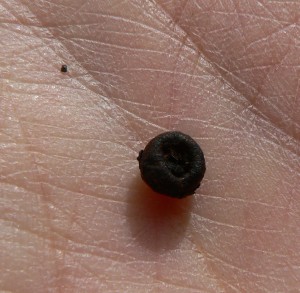The fiber and dye plants at my plot at Bramble Hill have done a brilliant job of setting seed this fall. It’s very exciting. Since it is nearly All Hallows Eve, or Samhain, or El Dia de los Muertos, depending on your tradition, I have been thinking a lot about the relationship between the dead and the living.
Harvest and abundance, frosts and death. Seeds carry us through from one season to the next, from the death of fall to the life of spring.
Orange cosmos are usually prolific, but this year seemed especially so. Here are some images of the cosmos plants back on October 19th when I harvested the Japanese indigo. A chaotic tangle of flowers, stalks, and seeds. Death and rebirth.
Here is a different perspective on the state of things, with dead stalks and seed heads alongside bright flowers still in bloom. In the background is the Holyoke Range, a defining feature of our local landscape. The mountain in the center, with the steep downward angle on its left and long slope on its right, is Mt. Norwottuck. The round-topped mountain to the right of it is Bare Mountain. The dip between them is locally known as The Notch.
Here is a lone seed head against the cloudy autumn sky on that windy day.
And here is a seed head that has already lost several of the long, delicate seeds. I think the structure and color of cosmos seeds is gorgeous.
Another plant that set a lot of seed this season is madder. Typically madder is propagated by roots or below-ground stems. Madder is a bedstraw-relative. New plants will grow up from the nodes of the stem or stalk, and pretty much any fleshy part of the root. I assume that it can also be propagated by seed, but alas I cannot vouch for this from personal experience. I tried planting madder seedlings one summer, but this is my only record:
It dates from July 7, 2011. No, it is not a lot to go on. I do not seem to have made any notes about it, so I’m guessing nothing germinated. That little green two-leaf seedling is probably a tomatillo. These are ubiquitous in everything we grow thanks to our home-made compost, which consists of a lot of salsa-making detritus.
If something noteworthy happened, I think I would have taken a photo or written about it in the garden log, but I can’t find anything. So, I am not sure if madder seeds are good for anything, but I sure have a lot of them! Exactly my kind of wealth.
Here are some madder berries. I don’t know if that’s botanically accurate but I think it’s descriptive. They are the dark purple spheres amidst the stems and foliage.
And here are some that have dried right on the stalks:
I opened up a berry that was still juicy. You can see the slight staining on my hand. No, I do not plan to try madder berries as a dye source. The pulp is on my index finger and the seed on my middle finger.
I scraped the skin off a dried berry, and the tough seed inside was almost the same size as the berry itself. Here’s the seed. A little world dense with potency.
I’m not precisely sure how to tell when madder seeds are mature. Both the seed from the juicy berry and the seed from the dried berry felt very hard.
I’m inclined to think that the one from the wizened berry is more mature.
Senescence–the over-maturity of a fruit and the beginning of its decomposition–is a characteristic that often indicates seed maturity.
Seeds teach us that biological life is cyclical, not linear.
A seed is both the destination and the source.

